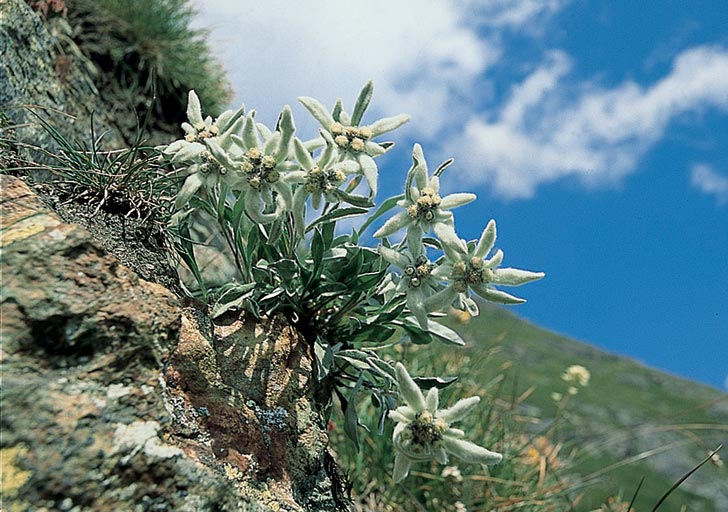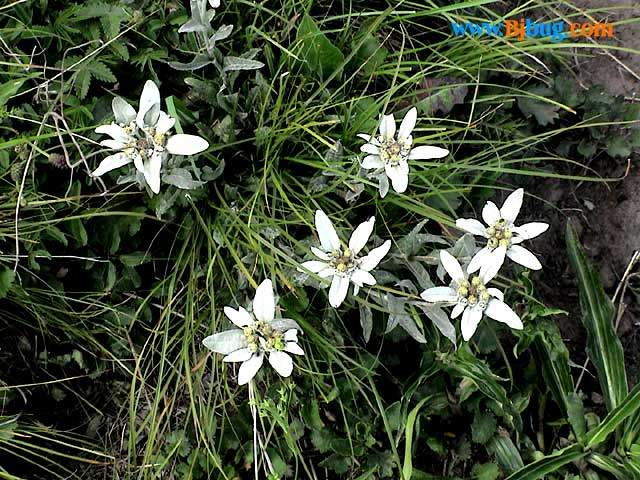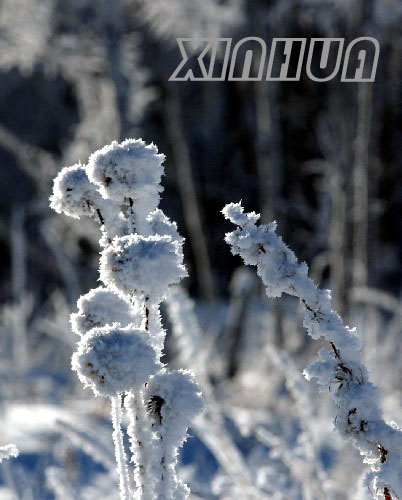“Small and white, clean and bright,” edelweiss is the emblem of Austrian nationalism and Nazi resistance in “The Sound of Music.” The von Trapp family is singing about their beloved flower before the lights go out in the theatre and, next we know, they’re escaping through the sunny Alps.
We’ve never seen edelweiss except in pictures. It seems to be starry shaped, with rubbery looking petals, slightly resembling a sea urchin. It grows best at “altitudes from 1700 meters to 2700 meters. Edelweiss prefers calcareous light soils with excellent drainage and southern exposure, where it likes to form herbal mats.”

“Love struck young men would try to endear themselves by collecting Edelweiss from those hard to access crags and ledges in the high alpine of Europe. During these quests many died from falls, or succumbed to exposure, insufficiently prepared for sudden weather changes.”
During the Second World War, German soldiers occassionally pinned Edelweiss flowers to their uniforms. The flower was supposed to be the sign of a "true soldier" in the Wehrmacht as it grows only in rugged terrain, generally above the tree line.

Edelweiss
Edelweiss (Leontopodium alpinum) is one of the best known European mountain flowers.
The name comes from German edel (meaning noble) and wei (meaning white). The scientific name, Leontopodium means "lion paw", being derived from Greek words leon and podion.
Description
*The flowers can grow to a size of 3 - 20 cm.
*The leaves appear woolly because of the covering of white hairs.
*The flowers are felted and woolly with white hairs, with characteristic bloom consisting of five to six small yellow flower heads (0.5 cm) surrounded by leaflets in star form.
*The flowers are in bloom between July and September.
*Edelweiss can be found on rocky lawns, limestone rocks, and meadows (more rarely). It is unequally distributed and prefers rocky limestone places at 2000 - 2900 m altitude.
*Originating in Asia, Edelweiss can be found on high mountains in Europe, Asia, and South America, in the Pyrenees, Alps and Carpathian Mountains.
*It is not toxic.
Edelweiss is a protected plant in many countries, including Switzerland, Slovenia (since 1898) and Romania (since 1933).
It usually grows in inaccessible places, which is why it is associated in Slovenia with mountaineering. Its white colour is considered in Switzerland a symbol of purity and due to its beauty, it got its Romanian name, floarea reginei (Queen's flower).

中国人对雪绒花的了解大都来自影片《音乐之声》,片中插曲《雪绒花》已在全世界流行,并被称为奥地利的非正式国歌。
在影片《音乐之声》中,《雪绒花》的旋律多次响起。当拒绝为纳粹服务的上校,准备冒险带全家离去时,他为家乡的父老乡亲献上的,还是那首他最喜爱的雪绒花。但一曲未了,歌喉已哽咽。爱妻玛丽亚默契地接唱下去,并带动全场观众加入大合唱,把全片推向最令人心潮澎湃的感人高潮。
雪绒花名叫勇敢者
雪绒花约有40个种类,分布在亚洲和欧洲的阿尔卑斯山脉一带。这种花在阿尔卑斯山脉中通常生长在海拔1700米以上的地方,由于它只生长在非常少有的岩石地表上,因而极为稀少。
在奥地利,雪绒花象征着勇敢,因为野生的雪绒花生长在条件艰苦的山上,常人难以得见其美丽容颜,所以见过雪绒花的人都是英雄。
从前,奥地利许多年轻人冒着生命危险,攀上陡峭的山崖,只为摘下一朵雪绒花献给自己的心上人,只有雪绒花才能代表为爱牺牲一切的决心。
关于雪绒花,奥地利有许多传说。人们相信雪绒花王可以指引那些采摘者们找到他们寻觅已久的花,但如果谁将花儿连根拔去,这个人将会坠入万丈深渊。












